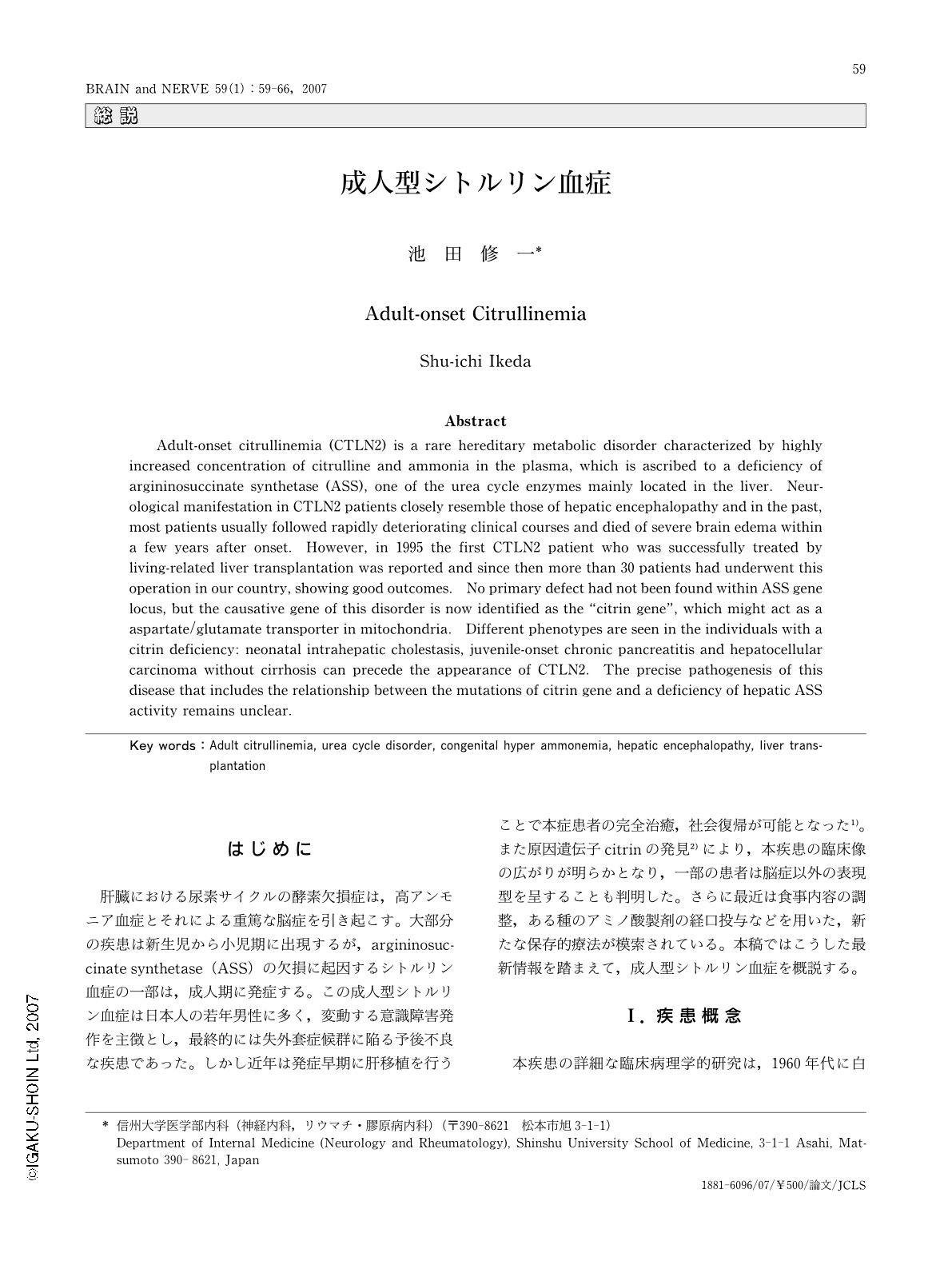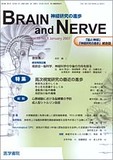Japanese
English
- 有料閲覧
- Abstract 文献概要
- 1ページ目 Look Inside
- 参考文献 Reference
はじめに
肝臓における尿素サイクルの酵素欠損症は,高アンモニア血症とそれによる重篤な脳症を引き起こす。大部分の疾患は新生児から小児期に出現するが,argininosuccinate synthetase(ASS)の欠損に起因するシトルリン血症の一部は,成人期に発症する。この成人型シトルリン血症は日本人の若年男性に多く,変動する意識障害発作を主徴とし,最終的には失外套症候群に陥る予後不良な疾患であった。しかし近年は発症早期に肝移植を行うことで本症患者の完全治癒,社会復帰が可能となった1)。また原因遺伝子citrinの発見2)により,本疾患の臨床像の広がりが明らかとなり,一部の患者は脳症以外の表現型を呈することも判明した。さらに最近は食事内容の調整,ある種のアミノ酸製剤の経口投与などを用いた,新たな保存的療法が模索されている。本稿ではこうした最新情報を踏まえて,成人型シトルリン血症を概説する。
Abstract
Adult-onset citrullinemia (CTLN2) is a rare hereditary metabolic disorder characterized by highly increased concentration of citrulline and ammonia in the plasma, which is ascribed to a deficiency of argininosuccinate synthetase (ASS), one of the urea cycle enzymes mainly located in the liver. Neurological manifestation in CTLN2 patients closely resemble those of hepatic encephalopathy and in the past, most patients usually followed rapidly deteriorating clinical courses and died of severe brain edema within a few years after onset. However, in 1995 the first CTLN2 patient who was successfully treated by living-related liver transplantation was reported and since then more than 30 patients had underwent this operation in our country,showing good outcomes. No primary defect had not been found within ASS gene locus, but the causative gene of this disorder is now identified as the “citrin gene”, which might act as a aspartate/glutamate transporter in mitochondria. Different phenotypes are seen in the individuals with a citrin deficiency: neonatal intrahepatic cholestasis, juvenile-onset chronic pancreatitis and hepatocellular carcinoma without cirrhosis can precede the appearance of CTLN2. The precise pathogenesis of this disease that includes the relationship between the mutations of citrin gene and a deficiency of hepatic ASS activity remains unclear.

Copyright © 2007, Igaku-Shoin Ltd. All rights reserved.


